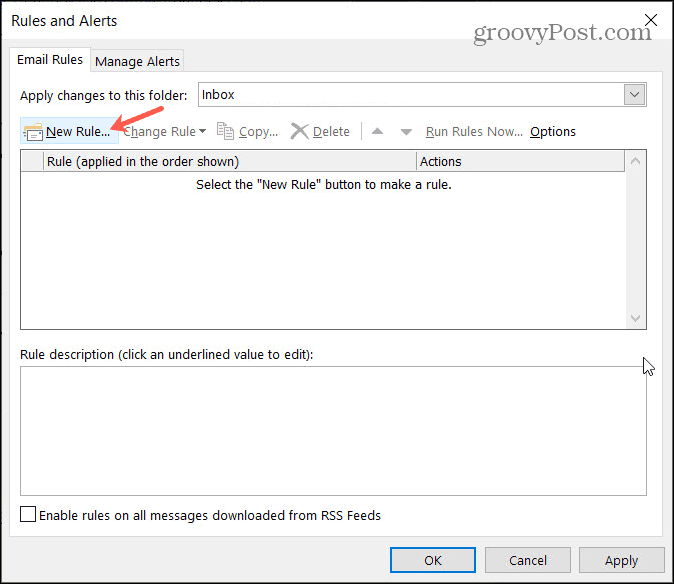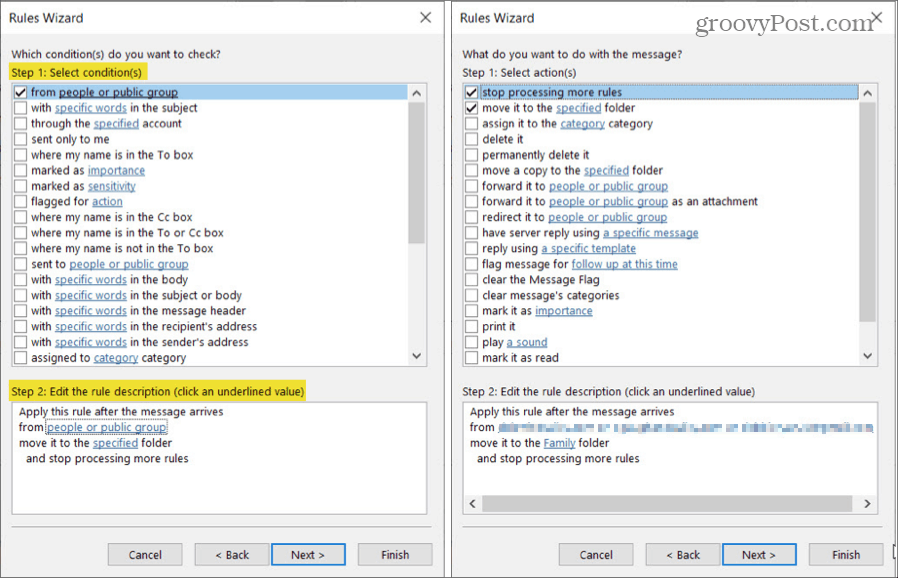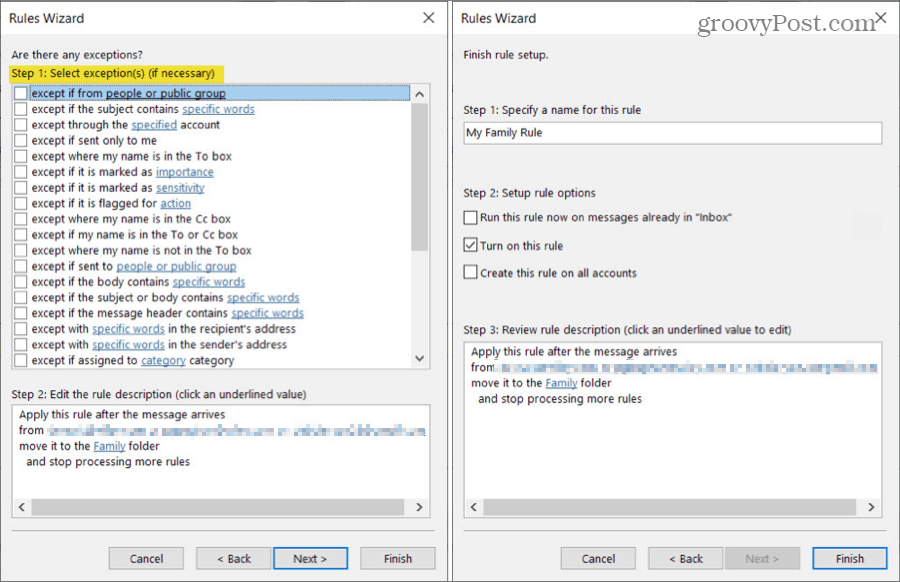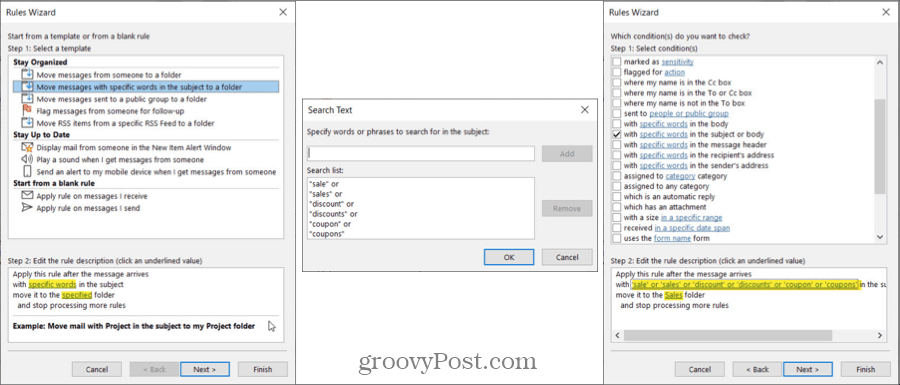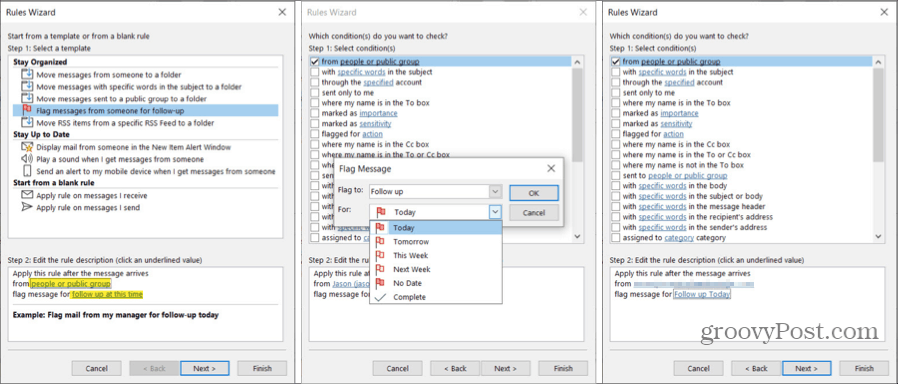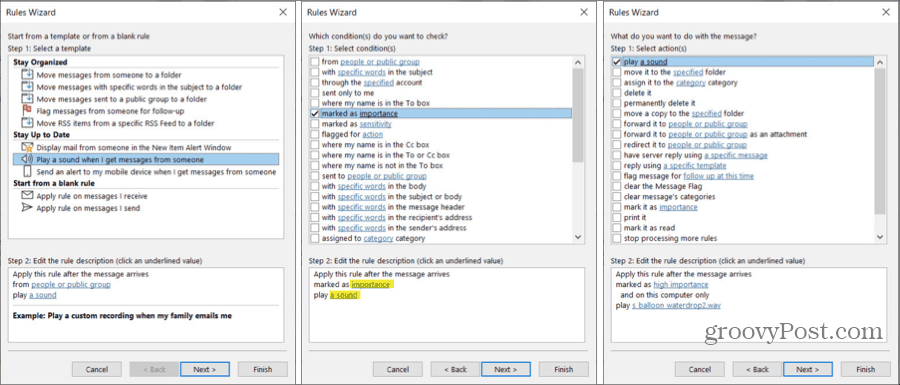Another great feature is the ability to set up rules. You can apply rules to incoming and outgoing emails that help you get organized, follow up, or stay up to date on your messages. And it’s all done automatically after the initial set up. Here a few common Outlook rules that you’ll appreciate because they’ll save you tons of time.
Setting up Rules in Outlook
For each of the rules below, you’ll start in the same spot. So whether you plan to set up one rule or several, or edit rules in the future, here’s how to navigate to the Rules area in Outlook.
Click New Rule to open the Rules Wizard. This tool walks you through each step for setting up your rule. And it offers up some of the most common rules along with options for blank rules you create from scratch. Keep in mind that even if you pick a basic rule to start as we will below, you can tailor it to fit your needs. After you set up a new rule, you can head back to this same area to edit, delete, run, or export rules.
Move Emails From People
Let’s say you have folders set up for people at work like clients or at home like family. You can have emails from certain people move automatically to the right folder. For our example, you can move emails from your parents, children, and siblings right into a Family folder.
Time-Saving Tip: As you go through the process to create your rule, you can click the Finish button instead of Next at any time. So if you don’t plan to add more actions or include exceptions, you can skip those screens altogether.
Move Emails With Specific Words
Maybe you have a folder for travel-related emails, sales at stores, or projects at work. And these emails come from various people and companies. You can move emails based on specific words in the subject, body, or a combination of both.
Time-Saving Tip: If you click Finish at any point, you won’t see the screen to give your rule a name, but you can do this on the Rules and Alerts screen. Select the rule, click Change Rule, and pick Rename Rule.
Flag Emails for Follow-Up
If you use Outlook for business, then you likely have emails that require you to follow up. Whether from your boss or a client, you can set this rule up easily.
Play a Sound When You Receive a Certain Email
One more Outlook rule that comes in super handy is for playing a sound. This triggers a particular sound alert when you get an email from a certain person, with a specific word, marked as important, and many other situations. We’ll set this up to play a sound for messages marked important.
Outlook Rules Can Save You Time
Rather than moving emails or flagging them manually, and to make sure you’re alerted for certain messages, these Outlook rules can save you time and keep you up to date. Which ones do you plan to set up? For more, take a look at how to automatically BCC yourself or others on emails you send using an Outlook rule.
![]()

